Among the various types of flooring for many years, a confident championship holds linoleum. Reasonable price, wide choice of models, easy installation and ease of maintenance – these key qualities underlie the choice of consumers. It is especially popular in houses and apartments. In this article we will figure out which is better to choose linoleum for the kitchen, what are the advantages of this type of coating, and what is it inferior to tile and laminate; tell you how to make installation of the material and care for him.

Linoleum in the kitchen: features and varieties
As the most popular flooring option, linoleum is used in various living and living rooms, as well as in public institutions. Due to a number of positive qualities, in particular, easy washing and waterproofing, it is widely used in the kitchen.

Linoleum entered our life for a long time. It was invented as early as in the 19th century in Great Britain in the form of a roll finishing manufactory and used not only as a floor covering, but also for decorating walls.
For a long time, this material was valued mainly for its affordability and ease of installation. Currently, modern manufacturers offer the widest range of products. Consumers recognize the material for a beautiful decor, a variety of colors and the ability to choose an unusual texture.
Choosing which linoleum is better for an apartment, the zealous owners take into account that a high-quality coating is not afraid of moisture, is not deformed under the furniture, does not contribute to the growth of bacteria, and is easy to clean. In addition to the above, linoleum, in comparison with moisture-proof samples of parquet and laminate, is much cheaper, which makes it indispensable in the kitchen.
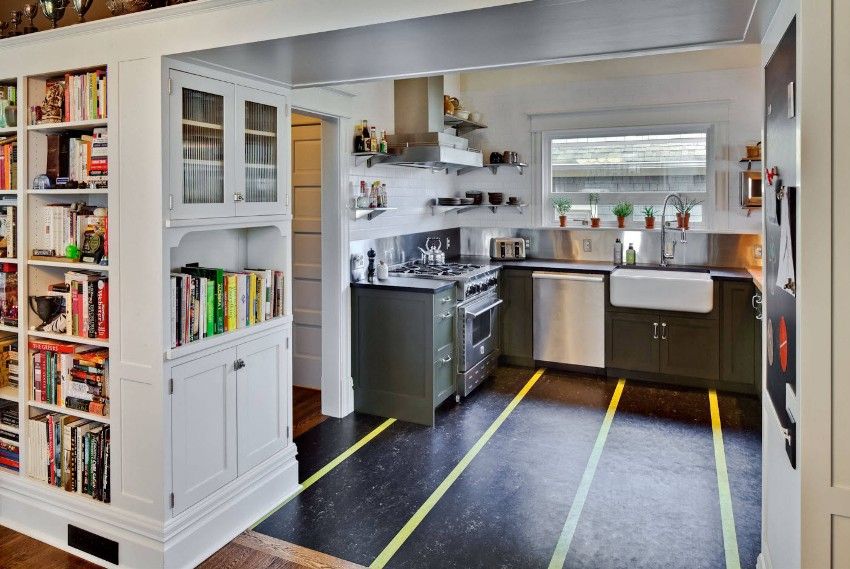
Before you decide which linoleum to choose for the kitchen, you need to get acquainted with its types. Depending on the material, it is natural or artificial.
For the production of natural flooring using flaxseed oil, wood and cork flour, lime powder, resins and natural pigments. Natural fabrics or nonwovens are taken as the basis. The main qualities of such linoleum are environmental friendliness, hygiene in use and durability (up to 40 years of operation).
Natural coating has a special protective layer that forms linseed oil. This substance is a powerful natural antiseptic, not only protects the coating from germs, fungi and bacteria, but also contributes to the disinfection of air in the kitchen. It should be noted that such a bactericidal effect is valid throughout the life of the coating.

Important! The main disadvantage of natural linoleum is its high price, which is several times higher than the cost of a synthetic analogue.
Natural coating is not afraid of the strongest kitchen contamination, fire and aggressive household chemicals. It has good thermal and sound insulation. On the positive properties of such a material is almost not inferior to the natural cork floor.
In the manufacture of artificial linoleum, polyvinyl chloride is used, which has the qualities of a natural coating, but serves much less. PVC linoleum, made in accordance with GOST and European EN standards, is generally odorless and environmentally friendly.

Manufacturers of artificial linoleum took care of its safety. To this end, PVC coatings are treated with special antibacterial substances. Thus, a specially created layer prevents the growth of bacteria. In addition, such properties help to protect households from infectious diseases. High-quality artificial linoleum has an additional antifungal impregnation, but such properties weaken over time.
Depending on the structure of the coating, linoleum can be homogeneous and heterogeneous. Homogeneous has one layer that is uniform in composition, color and has a thickness of up to 3 mm. This type of coating is not very popular, as it has a scant margin of decorative patterns and colors. At the same time, it has several undeniable advantages:
- the uniformity of the coating ensures durability and elasticity, prevents stratification;
- due to the roughness of the surface does not slip, it is less noticeable dust and dirt;

- the pattern penetrating the material through the entire thickness preserves the presentable appearance of linoleum.
The structure of standard heterogeneous linoleum has several layers:
- dense PVC backing provides sound and thermal insulation;
- fiberglass made of fiberglass makes the surface smooth or, on the contrary, rough;
- layer with a pattern, or decorative;
- protective ball;
- high density polyurethane layer provides additional protection.
The thickness of heterogeneous linoleum – up to 6 mm. This option is more popular as a kitchen cover.
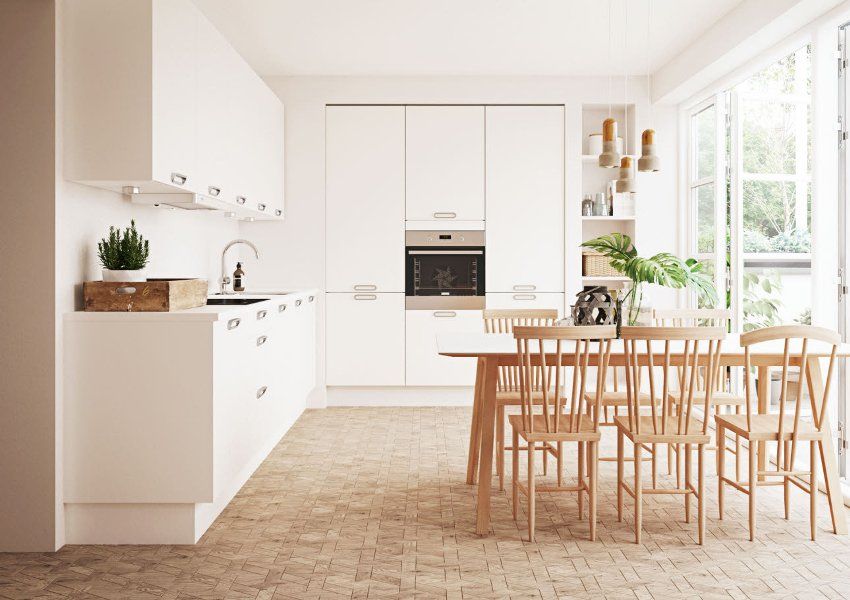
Deciding which linoleum to choose for your home, PVC should be preferred. The material from kolloksiva, although durable, but flammable, therefore in residential areas it is prohibited. Glyphthalic linoleum is unstable to temperature changes, and the positive qualities of a rubber coating are suitable for warehouse, industrial and sports facilities, but not for the kitchen.
PVC linoleum has varieties. Depending on the permeability of the premises and the durability of the coating is divided into domestic, commercial and semi-commercial. For a heavy-duty kitchen, choose a material with a durable protective layer having a thickness of 0.35 to 0.7 mm. In this case, suitable semi-commercial or even commercial heterogeneous linoleum.
Helpful advice! A simple rule will help in choosing a coating for the kitchen: the heavier the linoleum, the higher the density, which means that it has better characteristics and will last much longer.
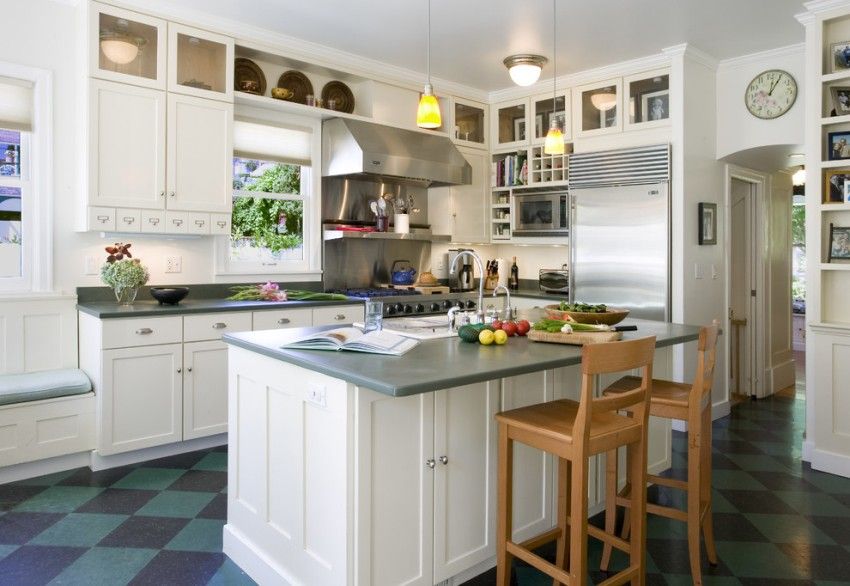
Poor-quality products, unpleasant experience and the rudiments of the last century contributed to the generation of a number of myths about linoleum, in particular:
- The floor on which the linoleum bed, has an unpleasant smell. This myth disproves the majority of rating modern manufacturers that use in the manufacture of coating quality materials that have virtually no odor and harmful emissions.
- With time, spots appear on the surface of linoleum at the places of the greatest permeability. Such a minus does have a household class of linoleum, commercial and semi-commercial types are mostly resistant to the aggressive effects of household chemicals, and even after several years of use do not have scuffs.
- Thick linoleum will last longer. The statement is not entirely correct, since commercial and semi-commercial coatings are usually thicker than household ones. You should be aware that transparency plays an important role in wear resistance, that is, a protective layer whose thickness must exceed 0.5 mm.
- Between the bands of linoleum seams diverge. In modern construction, this problem is already irrelevant, since special strips are superimposed on the seams, and in the kitchen, for the purpose of hygiene, as a rule, one-piece canvas is used.
- Under linoleum mold can form. Correctly covered coating eliminates the formation of fungus, especially if it is artificial, with the upper moisture-proof layer. Even during flooding, you just need to bend the wet part of the linoleum and let it dry. In the event that you are often poured by neighbors or pipes are leaking, it is better to choose a tile.
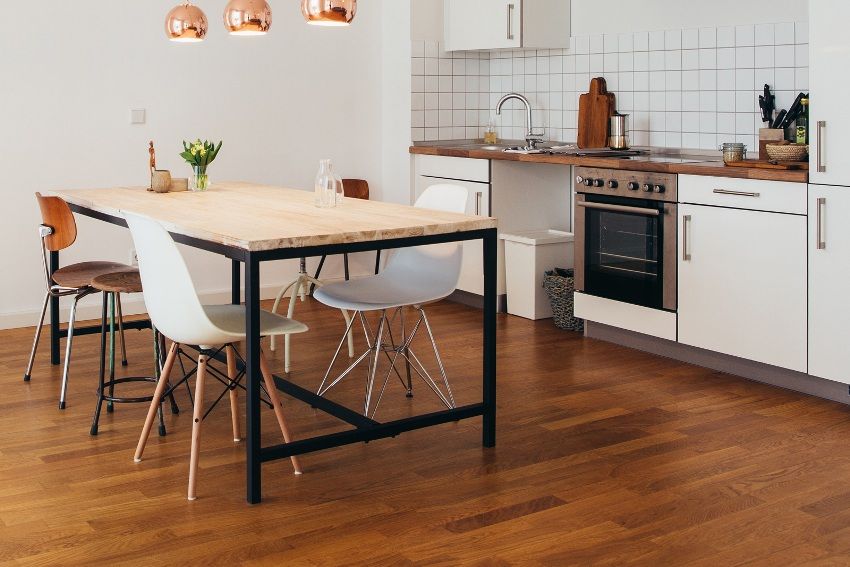
Abrasion groups and wear class linoleum
In this question, how to choose the right linoleum, in addition to the type of coating, it is necessary to take into account its abrasion and wear resistance, which are the main criteria of quality.
According to the European certificate EN660-1, abrasion is defined as the degree of wear of the upper protective layers under the influence of an abrasive wheel in a certain mode. The groups, which are only four, are in Latin letters, where:
- F – the lowest degree of wear resistance of the surface with high abrasion (change in thickness from 0.3 to 0.6 mm);
- M – low level of wear resistance with a moderate change in the size of the layer (from 0.15 to 0.3 mm);
- P – the average degree of wear resistance with low abrasion of the surface (from 0.08 to 0.15 mm);
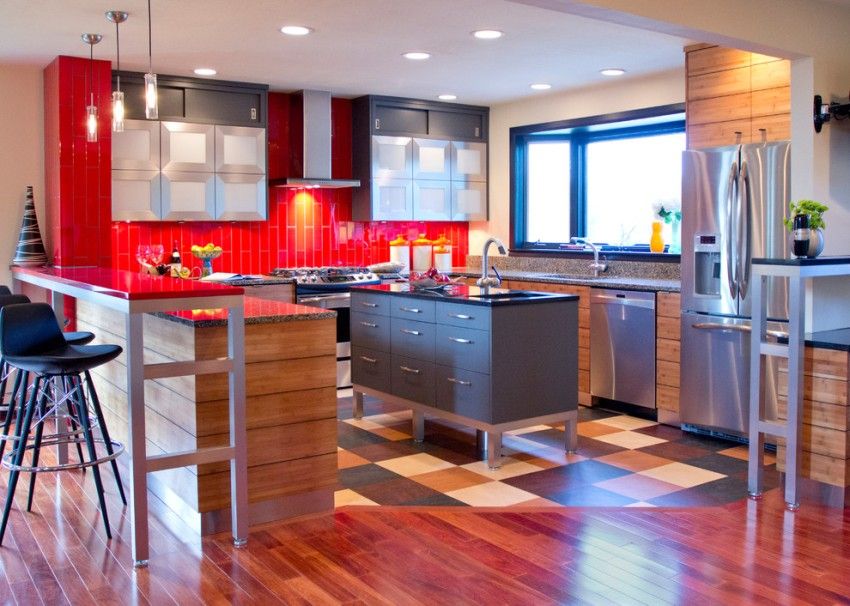
- T – the most durable layer with a change in thickness to 0.08 mm.
The level of wear resistance is also determined by the special European classification and EN685. Such marking consists not of their letters, but of two figures, where the first designates the type of room, and the second – the level of permissible load on the floor. It is these classes that share coverage as follows:
- household with numbers 21-23 (for living rooms);
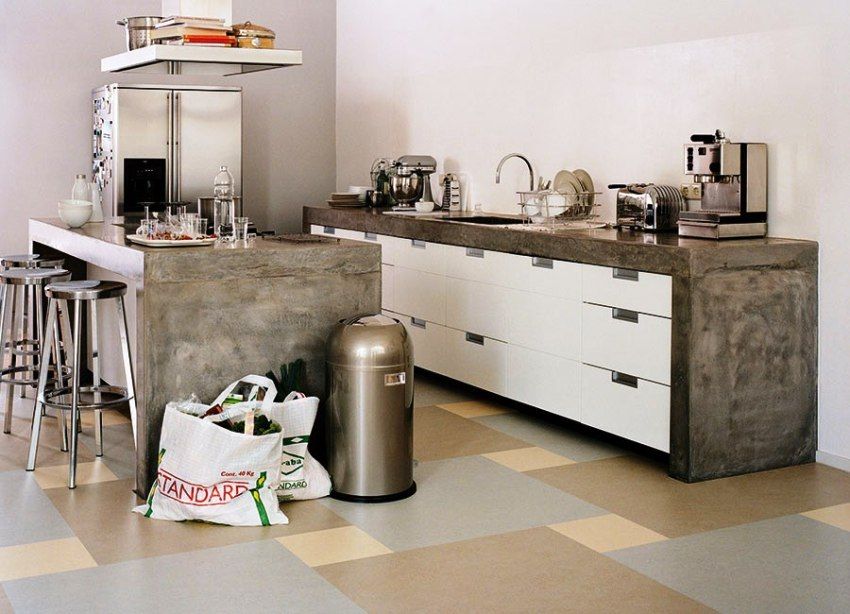
In deciding how to choose linoleum for the kitchen, you should consider the various features of the coating and its advantages. It is not worth saving, as it is in the kitchen that linoleum is subjected to heavy loads and dirt. To choose the desired model, color and texture – now is not a problem due to the widest range of linoleum, which is considered to be the most popular flooring.

